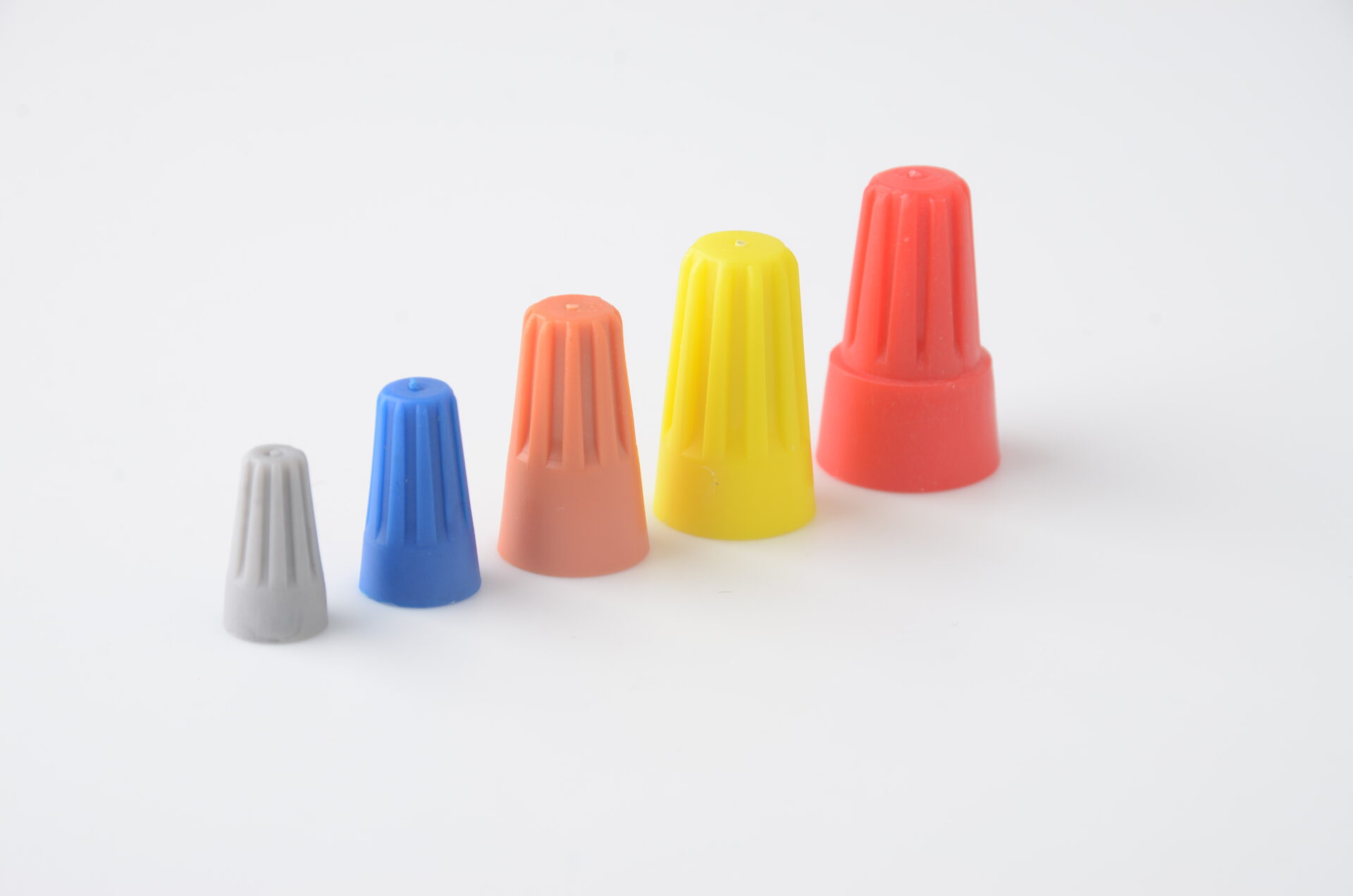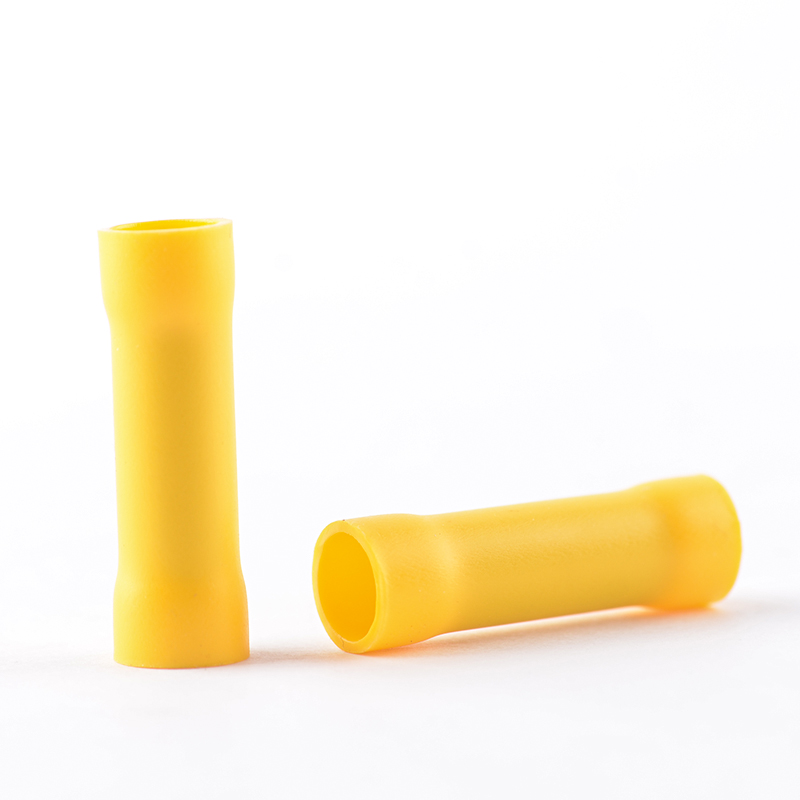Understanding Wire splicing connectors
A wire splice is a permanent or semi-permanent connection between two or more electrical wires.
A wire splice is a permanent or semi-permanent connection between two or more electrical wires.
This Wire splicing connectors are the most recognizable type for household and commercial electrical work.
How They Work: A threaded plastic shell is twisted onto the ends of stripped wires, twisting them together and enclosing them in an insulated cap.
Best For: Connecting solid core wires in electrical junction boxes (outlets, switches, light fixtures).
Pros: Inexpensive, quick to install, no special tools needed, widely available.
Cons: Not ideal for stranded wire alone (can cut fine strands), not waterproof, can loosen over time if not installed correctly.
Key Tip: After twisting on the wire nut, always give a gentle pull on each individual wire to ensure it’s secure.

A very secure and professional method, especially common in automotive, low-voltage, and appliance wiring.
How They Work: A metal tube is placed over the stripped ends of the wires. A special crimping tool is used to compress the metal tube, creating a cold weld between the wires and the connector. They are often insulated with a plastic sleeve.
Best For: Stranded wires, automotive applications, DC power, and situations with vibration.
Pros: Extremely strong and reliable connection, vibration-resistant, good for tight spaces.
Cons: Requires a specific crimping tool; a poor crimp (e.g., using pliers) can lead to failure.
Types:
Butt Splice: For connecting two wires end-to-end.
Ring or Spade Terminal: For connecting a wire to a screw terminal.
A modern, tool-less connector that has become very popular.
How They Work: You simply push the stripped wire into a spring-loaded hole. A internal clamp grabs the wire and holds it securely. To release, you pull the wire while twisting or use a release lever on some models.
Best For: Solid and fine-stranded wires, making connections in crowded boxes, and for anyone who wants a fast, reliable connection.
Pros: Extremely fast and easy to install and remove, reusable, excellent connection that doesn’t loosen.
Cons: More expensive than wire nuts, bulkier.

The gold standard for durable, waterproof, and professional splices.
How They Work: This is a crimp connector with a tube of adhesive-lined heat-shrink tubing over it. After crimping, you apply heat (with a heat gun), which causes the tubing to shrink tightly and the internal adhesive to melt and seal the connection.
Best For: Automotive, marine, outdoor, and underground applications where moisture, corrosion, and environmental protection are critical.
Pros: Creates a completely sealed, waterproof, and corrosion-resistant splice that is also mechanically robust.
Cons: Requires both a crimping tool and a heat gun.
A quick way to tap into an existing wire without cutting it.
How They Work: A sharp metal tooth inside the connector pierces the insulation of the “main” wire when crimped, making contact with the conductor. A second “tap” wire is inserted and crimped into the other side.
Best For: Quickly adding accessories (like lights or radios) to an existing wire, commonly in automotive 12V systems.
Pros: Very fast and requires no stripping of the main wire.
Cons: Controversial because the piercing tooth can damage the main wire and create a point of failure or corrosion. Not recommended for critical or high-current applications.
| Connector Type | Tool Required | Best For | Key Advantage | Key Disadvantage |
| Wire Nut | Hands | Solid wire in junction boxes | Low cost, easy | Can loosen; not for vibration |
| Crimp Connector | Crimping Tool | Stranded wire, automotive | Very strong, vibration-proof | Requires specific tool |
| Push-In | None | Solid/fine-stranded wire | Fast, reusable, reliable | Higher cost per connector |
| Heat Shrink Butt | Crimper + Heat Gun | Harsh environments (auto, marine) | Waterproof, sealed, strong | Requires two tools |
| T-Tap | Crimping Tool | Quick automotive taps | No cutting main wire | Can damage wire; unreliable |
Power Off: ALWAYS turn off the power at the circuit breaker and verify it’s off with a voltage tester before working on any wiring.
Match the Connector to the Wire:
Size (Gauge): Ensure the connector is rated for the wire gauge(s) you are using.
Material: Use copper-rated connectors for copper wire. Never use connectors for aluminum wire with copper wire unless specifically rated for both (and use anti-oxidant compound for aluminum).
Solid vs. Stranded: Some connectors are better for one or the other. Check the manufacturer’s specifications.
Use the Right Tool: Never use pliers to crimp a connector meant for a crimping tool. Never use a lighter for heat shrink; use a heat gun to avoid burns and fires.
Prepare the Wire: Strip the correct amount of insulation. Too little exposes bare wire; too much can leave a gap inside the connector.
Protect the Splice: Always ensure the connection is fully insulated and, if outside a junction box, is also in a weatherproof enclosure. Never leave a splice exposed.
Follow the Code: For house wiring, all splices must be contained inside an approved electrical junction box with a cover plate.
By choosing the right connector for the job and following these safety steps, you can create safe and reliable electrical connections that will last for years.
Online Store